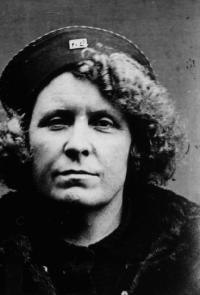‘No worse and no better’: Irish women and backstreet abortions
Published in 20th Century Social Perspectives, 20th-century / Contemporary History, Features, General, Issue 1(Jan/Feb 2013), Volume 21
Nurse Mary Anne (‘Mamie’) Cadden—Ireland’s most infamous mid-twentieth-century backstreet abortionist. A qualified midwife, Cadden set up a nursing home in Rathmines in 1931. Disqualified following her conviction for the abandonment of a patient’s infant in 1939, Cadden served a year in prison. She set up business in Dublin once again upon her release, offering treatment for a variety of ailments while performing abortions at the same time. Two women died as a result of Cadden’s botched operations. She was convicted of the murder of Helen O’Reilly in 1956 and was sentenced to death; the sentence was subsequently commuted to penal servitude for life. Cadden was later declared insane and transferred to Dundrum Criminal Lunatic Asylum. She died there in 1959 as a result of a heart attack. (NAI)
Addressing the jury in the course of George J.’s trial for using an instrument with intent to procure the miscarriage of his girlfriend Carrie D. in June 1945, Mr Justice McCarthy told the jurors that for the past ten or twelve years in Dublin ‘crimes of passion of the worst character have come before the courts’. The judge seems to have regarded abortion as a crime of passion, which ‘reveal[ed] mankind at its worst’ (NAI, CCA, 60/1945). An editorial in the Irish Times the previous summer had also expressed a strong sense of disgust at the number of abortion cases before the courts. The editor reminded its readers that ‘Dublin is probably no worse and no better than any other city of its size’ and that the city’s ‘inhabitants are prone to all the many frailties of human kind. Vice lives check by jowl with virtue in our midst, and the mere fact that our people happen to be Irish does not endow them with any monopoly of either good or evil qualities’ (Irish Times, 2 August 1944). While Irish women may have been less inclined to resort to abortion to control their fertility than British women during the first half of the twentieth century, Iri
















